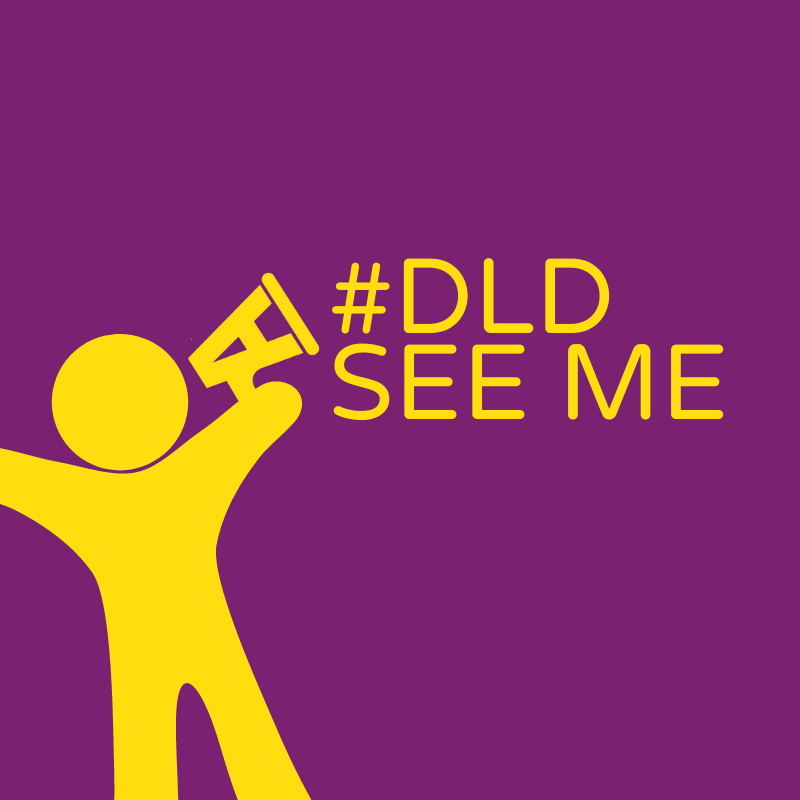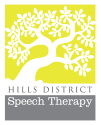
Friday 16th October is world Developmental Language Disorder (DLD) awareness day.
DLD is a persistent and ongoing difficulty in an individual’s use and/ or understanding of language and affects both children and adults. These difficulties can apply to the understanding and/or use of sentence structures, grammar, vocabulary and conversation and impact all parts of an individual’s lives including their literacy, learning, friendships and emotional well-being. In 2020, the theme for DLD Awareness day is ‘See Me’, for all people to know of DLD and its impacts on individuals.
It is possible, perhaps even likely, that you have never heard the term Developmental Language Disorder before, so where does it come from? In 2017 an expert panel of Speech Pathologists, Psychologists, Paediatricians, Psychiatrists, Teachers and charity representatives met to come to a consensus regarding the various terminology and diagnostic criteria for language difficulties. The outcome of this, was the term ‘Developmental Language Disorder’ to be used to describe a language difficulty that is not associated with an additional biomedical condition (e.g. brain injury, Intellectual Disability, Autism Spectrum Disorder). This allowed for consistency of terminology across professions and replaced now outdated terms such as ‘Specific Language Impairment’.
Even though you may not have heard of the term, with a prevalence of approximately two students per classroom, increased awareness is critical for understanding and provision of supports. Research continues to show the breadth and significance of the impact of a DLD on individuals. There are close links between DLD and dyslexia (Bishop and Snowling 2004). It can also result in social difficulties, with research showing that by 16 years of age, 40% of individuals with DLD had difficulty interacting with peers (St. Clair, Pickles, Durkin & Conti-Ramsden, 2011) and those with DLD are 2.5 times more likely to report symptoms of depression than their typically developing peers (Conti-Ramsden & Botting, 2004). When leaving school, DLD increases the risk of unemployment and lack of independence in adulthood (Conti-Ramsden & Durkin, 2008).
Research is clear on the significant impacts of DLD. However, it can be difficult to comprehend these statistics and translate this to what an individual’s everyday experience may be. What does it mean that people with DLD have social difficulties? What are the impacts on schooling? As professionals working with these individuals, we see the daily frustrations of ‘it’s too hard’ simply because trying to keep up with schooling expectations, is too tiring. We see the distress when a parent can’t understand what has happened in their child’s day because it can’t be communicated. We see the frustration when accessing information from websites is too difficult. We see the pain when an adolescent has not understood a sarcastic comment and has been isolated by peers. DLD may be a hidden, and little heard of, disability, but the impacts are pervasive and devastating.
However, we are not without hope! Support from Speech Pathologists, Teachers and Educational Psychologists is available and effective for these children, adolescents and adults. Advocacy continues to occur at the local level (as professionals continue to support and advocate for, individuals in their classroom and workplace), national level (where ongoing advocacy is occurring for funding to be available) and international level (for a consensus of terminology across countries).
If you would like to learn more about DLD and its impacts, RADLD (Raising Awareness of Developmental Language Disorder) and NAPLIC (National Association of Professionals concerned with Language Impairment in Children) are excellent places to start.
References:
- Bishop, D. V. M., & Snowling, M. J., (2004) Developmental Dyslexia and Specific Language Impairment: The same or different? Psychological Bulletin. 130 (6), 858-886.
- St Clair, M. C., Pickles, A., Durkin, K., & Conti-Ramsden, G. (2011). A longitudinal study of behavioral, emotional and social difficulties in individuals with a history of specific language impairment (SLI). [Article]. Journal of Communication Disorders, 44(2), 186-199.
- Conti-Ramsden, G., & Botting, N. (2004). Social difficulties and victimization in children with SLI at 11 years of age. Journal of Speech, Language, and Hearing Research, 47, 145-161.
- Conti-Ramsden, G., & Durkin, K. (2008). Language and independence in adolescents with and without a history of Specific Language Impairment (SLI). Journal of Speech, Language and Hearing Research, 51, 70- 83.

 Written by Claire Offord
Written by Claire Offord